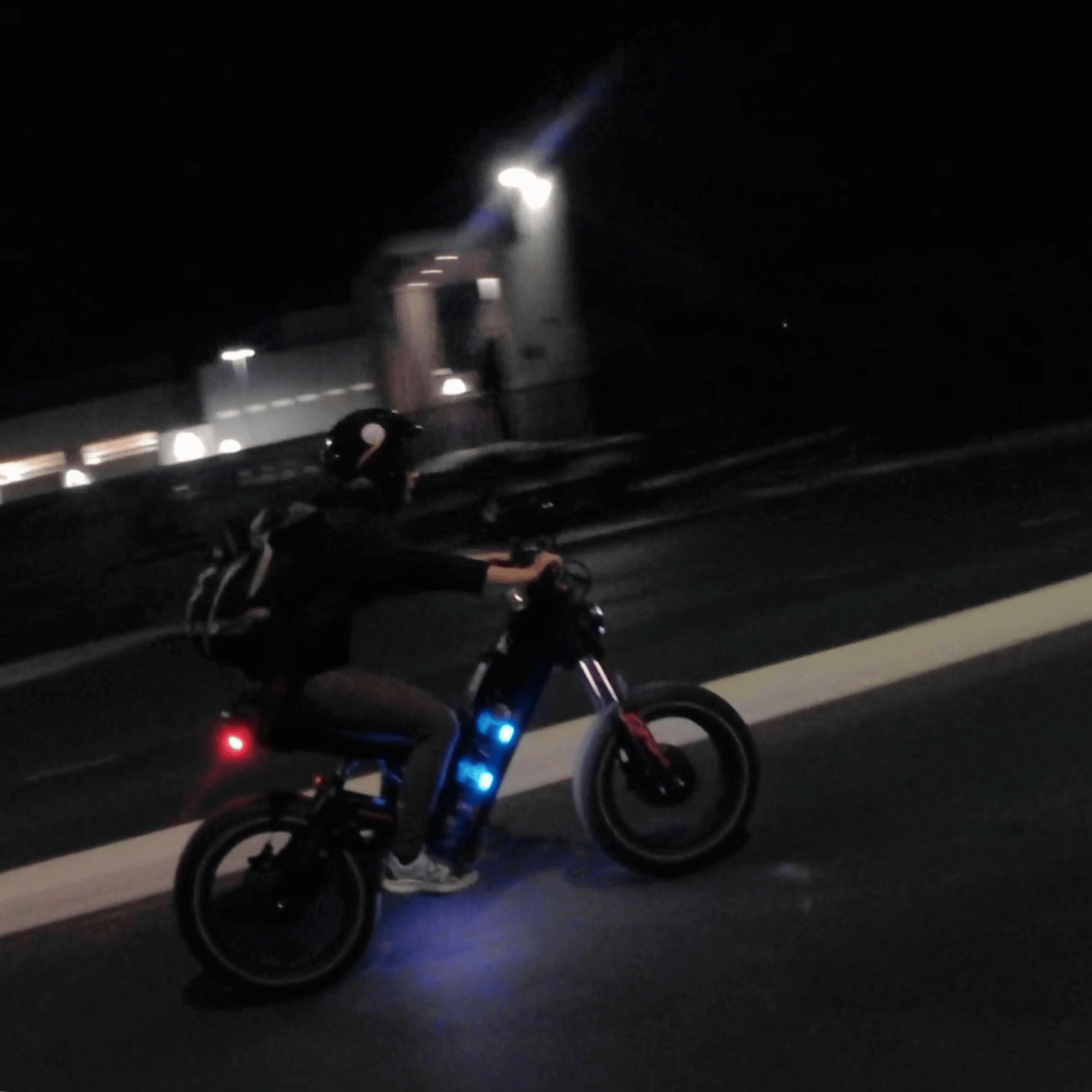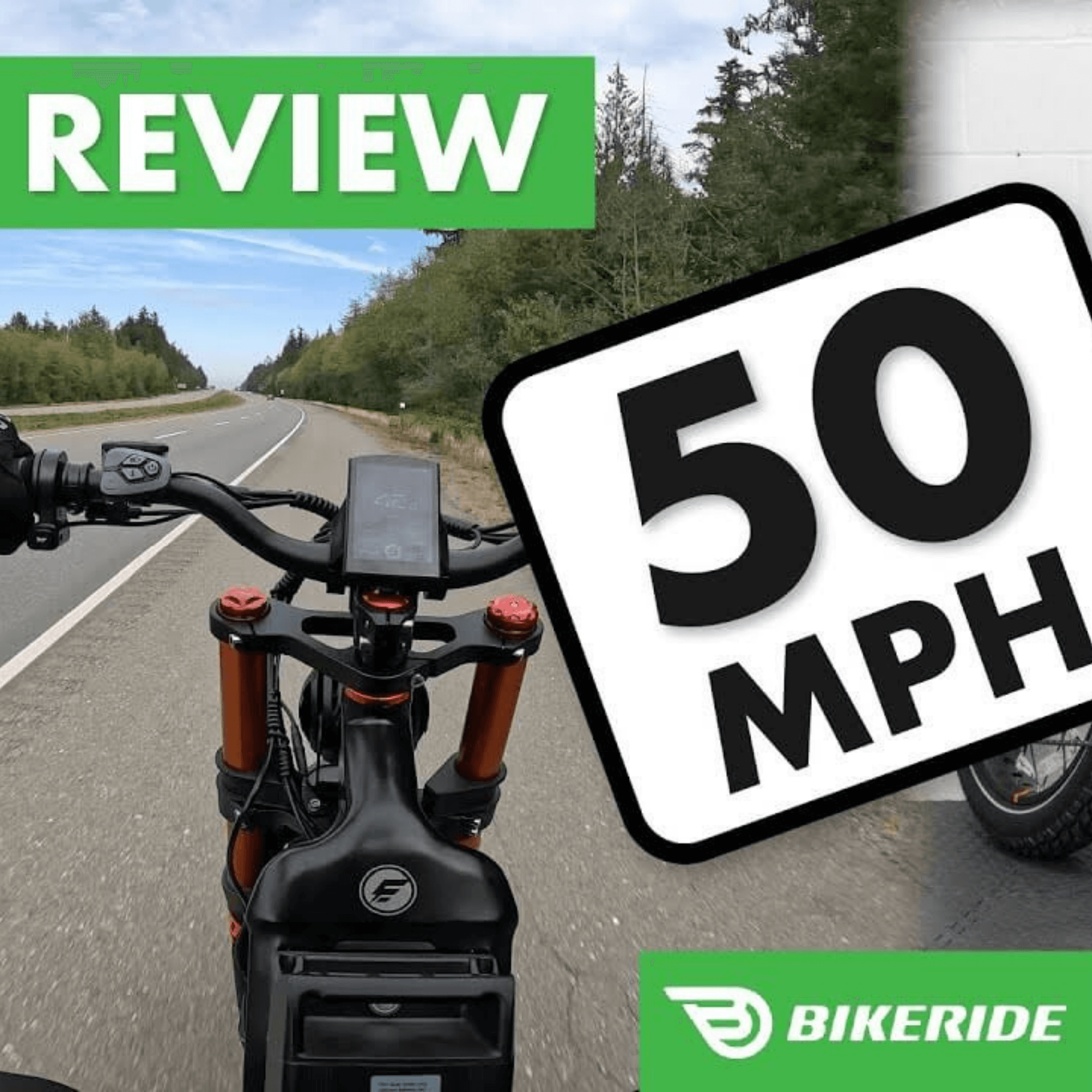There’s nothing quite like the thrill of hopping on your e-bike for a commute, trail ride, or weekend adventure. E-bikes blend traditional bicycle mechanics with electric components, so they need a little extra TLC to stay in top shape.
Whether you’re a daily commuter or an occasional rider, a quick pre-ride check (and regular maintenance) prevents breakdowns, boosts safety, and extends your e-bike’s lifespan.
First: The 2-Minute Pre-Ride Check (Do This Every Time You Ride)
You wouldn’t drive a car without checking the gas and brakes—your e-bike deserves the same respect. This quick checklist takes less than 2 minutes and catches most "ride-ruining" issues before you even leave the driveway.
1. Tires: Pressure & Condition
Tires are your e-bike’s only contact with the ground—don’t skip this!
Check pressure: Use a tire gauge to match the recommended PSI. Underinflated tires cause sluggish performance, increased wear, and a higher risk of flats. Overinflated tires reduce grip, especially on wet or rough terrain.
Inspect for damage: Look for cuts, bulges, embedded debris (glass, thorns), or worn tread. If the tread is smooth (no "grip lines"), it’s time for new tires—this is critical for safety, especially on hills or wet roads.
2. Brakes: Responsiveness & Wear
E-bikes are heavier and faster than regular bikes, so brakes are non-negotiable.
Test lever feel: Squeeze both brake levers—they should feel firm (not spongy) and engage quickly. If the levers hit the handlebars before stopping, adjust the brake cables or bleed hydraulic brakes.
Check pads & rotors: For disc brakes, inspect the brake pads—if they’re less than 1–2mm thick, replace them. Look for scratches or warping on rotors (the metal discs). For rim brakes, ensure pads make full contact with the rim and aren’t worn down to the metal.
3. Battery: Charge & Connections
Your battery is the heart of your e-bike—don’t let it die mid-ride.
Check charge level: Most e-bike displays show battery percentage. Aim for at least 20–30% remaining for short rides and 50% or more for long trips or hills.
Inspect connections: If your battery is removable, ensure it’s locked into place tightly. Check the charging port for dirt, corrosion, or damage; wipe it clean with a dry cloth if necessary. Never ride with a loose or damaged battery.
4. Frame & Components: Tightness & Stability
A loose part can turn a fun ride into a dangerous one.
Quick visual scan: Look for cracks, dents, or rust on the frame (pay extra attention to welds).
Tighten key parts: Give the handlebars, stem, and seat post a gentle wiggle—they should feel rock-solid. If they move, use an Allen wrench to tighten the bolts. Check that pedals are secure, too.
5. Electronics: Display & Assist Modes
Make sure your e-bike’s "brain" is working.
Power on: Turn on the display to confirm it lights up and shows speed, battery, and assist level.
Test assist: Pedal gently and switch through assist modes (1–5). The motor should engage smoothly—no lag, grinding, or sudden jolts.
Regular Maintenance: When to Service (By Mileage or Time)
Pre-ride checks catch immediate issues, but regular maintenance keeps your e-bike reliable long-term. Use this mileage-based schedule as a guide (adjust for harsh conditions like rain, mud, or salt):
| Maintenance Task | Frequency | What to Do |
|---|---|---|
| Deep tire inspection & rotation | Every 50–100 miles | Check for hidden damage; rotate tires (if front/rear are the same size) to evenly distribute wear. |
| Brake adjustment/bleeding | Every 100–200 miles (or if spongy) | For hydraulic brakes: Bleed to remove air bubbles. For cable brakes: Tighten cables or replace worn pads. |
| Chain lubrication & cleaning | Every 50–100 miles (or if dirty) | Wipe chain with a degreaser, dry thoroughly, and apply e-bike-specific chain lube (avoid WD-40—it’s a cleaner, not lube!). |
| Derailleur tuning | Every 200–300 miles | Ensure gears shift smoothly without skipping. Tighten limit screws if gears rub. |
| Suspension service (front/rear) | Every 500–1,000 miles (or 6 months) | Check air pressure (for air forks) or oil level (for coil forks). Clean stanchions and replace seals if leaking. |
| Battery calibration | Every 3–6 months | Fully charge the battery, then drain it to 10–20% (ride or use a discharge tool) to help the display show an accurate range. |
| Full professional tune-up | Every 1,000–2,000 miles (or 1 year) | Let a mechanic inspect internal components (motor, controller), adjust bearings, and service hard-to-reach parts. |
Pro Tips for Long-Term E-Bike Health
1. Suspension Care (Critical for Trail Riders)
If your e-bike has front (or rear) suspension:
- Check air pressure weekly: Use a shock pump to match the manufacturer’s recommendations (based on your weight). Too little pressure = bottoming out; too much = stiff, uncomfortable ride.
- Clean stanchions: Wipe the metal rods (stanchions) with a damp cloth after every muddy ride to prevent scratches. Apply a thin layer of suspension oil to keep seals lubricated.
2. Battery Longevity Hacks
Batteries degrade over time, but these steps extend their life:
- Avoid extreme temperatures: Don’t leave your e-bike in direct sunlight (over 100°F/38°C) or cold (under 32°F/0°C) for long. Store the battery indoors if possible.
- Don’t overcharge: Unplug the battery once it hits 100% (most modern e-bikes have safeguards, but it still helps!).
- Partial charges are better: For daily use, charge from 20% to 80% instead of draining to 0% every time. Save full charges for long rides.
3. Weather Protection
- Rain/mud: Wipe down the frame, chain, and brakes after riding in wet conditions. Apply chain lube to prevent rust. Avoid spraying water directly on the display or motor.
- Winter/salt: Salt eats away at metal components. Rinse the frame, wheels, and brakes with fresh water weekly (use a low-pressure hose) and dry thoroughly.
What to Do If You Notice Issues
- Strange noises: A squeaky brake, grinding chain, or rattling frame usually means a loose part or worn component—stop riding and inspect.
- Motor lag: If the motor doesn’t engage right away, check battery connections first. If that’s not it, it could be a controller issue—seek professional help.
- Battery draining fast: This could mean old age (batteries last 2–5 years) or a faulty cell. A mechanic can test the battery’s health.
Final Thoughts: Your E-Bike Will Thank You
A little effort goes a long way with e-bike maintenance. A 2-minute pre-ride check prevents mid-ride disasters, and regular servicing saves you money on costly repairs down the line. Whether you’re logging miles to work or exploring mountain trails, keeping your e-bike in top shape ensures every ride is safe, smooth, and fun.
Ready to roll? Grab your tire gauge, check that battery, and enjoy the ride!
Please leave a message in our Facebook group or contact customer service(service @ eahoraebike.com) with any questions you might have.
Follow us on social media!
Ride far. Ride safe. Ride Eahora.







